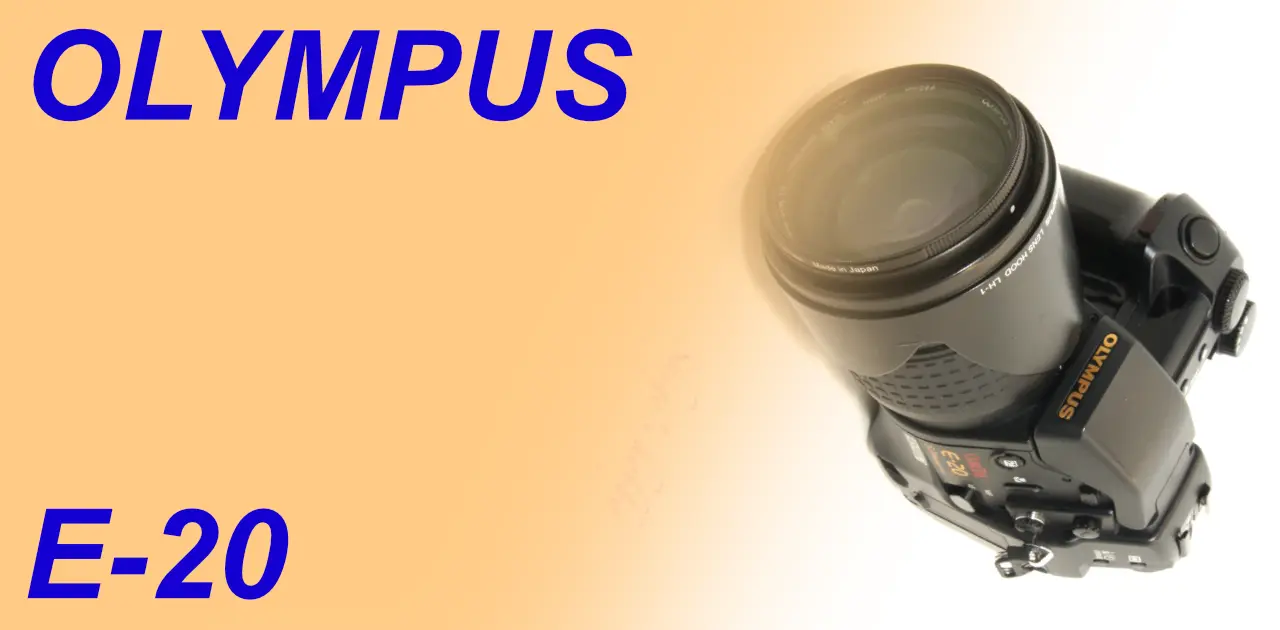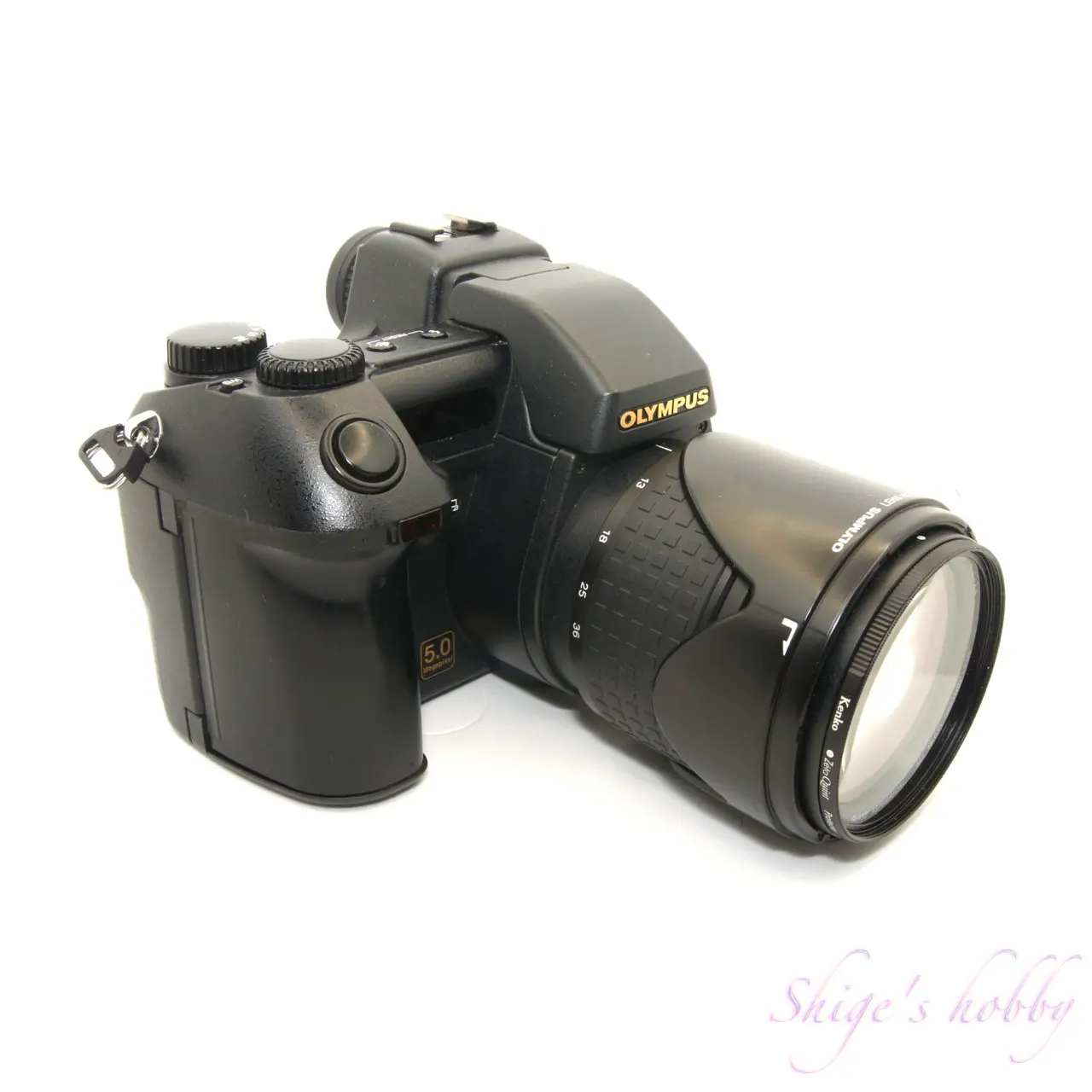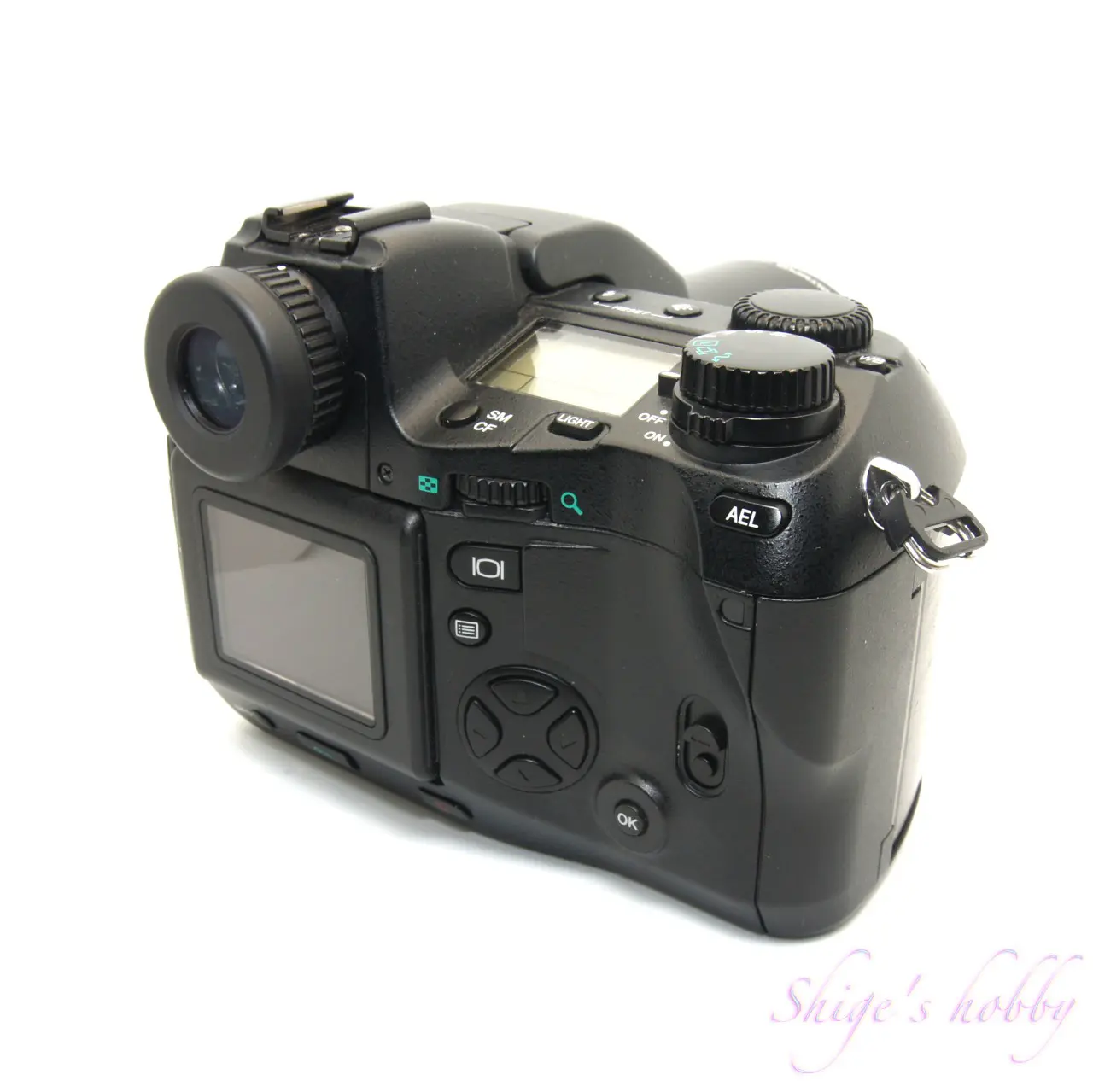OLYMPUS E-20 integrated lens SLR camera

A review of the OLYMPUS E-20 and sample photos.
- Please see the disclaimer regarding advertising here.
- Italicized links in the text are advertisement links that take you to other sites.
Table of contents

Gallery
- The gallery photos were directly developed in OM Workspace using data recorded in Raw format.
Review


1.Overview
The OLYMPUS E-20 is a single-lens reflex digital camera with an integrated lens that was released by Olympus in 2002.
The main features are as follows, with details shown in the table:
- 5-megapixel, 2/3-inch CCD sensor
- The lens features a 4x zoom (35mm-140mm equivalent in 35mm format).
- The viewfinder uses a TTL SLR system (SLR).
- The rear LCD screen is 1.8 inches, 180,000 dots, and supports live view.
- Images are saved at a resolution of 2560 x 1920 pixels.
- Images are stored on SmartMedia and CompactFlash cards.
- Filter diameter is 62mm.
- Battery: Four AA batteries or two CR-V3 lithium batteries.
2.Usability
The OLYMPUS E-20’s styling follows Olympus’s signature L-shaped form, and can be said to be the prototype of the E-1, a Four Thirds camera released in 2003.
The lens is carried over from its predecessor, the E-10, retaining the advantage of an internal zoom with no change in overall length, and the bright f/2-f/2.4 aperture is reassuring.
Images are slightly distorted at the wide-angle 35mm end. In the comparison image below, barrel distortion can be seen in the upper beam.
Shooting closer objects such as bricks with a lattice-like shape makes the barrel distortion even more noticeable. Furthermore, distortion correction is not performed on the camera, even in JPEG recording.
As for distortion, Affinity Photo2, which I personally use, is a paid software, but it has a correction profile for the E-10, so if you turn on the distortion correction function, it will automatically correct E-20 images using EXIF information.
OM Digital Solutions’ OM Workspace, the successor to Olympus’s original software OLYMPUS Master/OLYMPUS Master 2, also has a function to correct distortion in images taken with the E-20.
(Below: left is uncorrected, right is corrected)


Despite the camera’s small sensor, the viewfinder provides good visibility and makes it easy to find the focus point. Since the lens is fixed, the matte screen cannot be replaced with a grid or other similar item.
The focal length is changed using the zoom ring at the front of the lens barrel, and manual focus is possible using the focus ring at the front of the lens. Autofocus and manual focus are switched with a switch, and manual focus cannot be interrupted with the focus ring during autofocus.
The camera has two slots for recording media: SmartMedia and CompactFlash cards. Unlike recent cameras, it is not possible to write JPG and Raw to separate media or automatically use both media consecutively. Media switching is manual.
Images are available in five recording sizes: Raw, TIFF, SHQ, HQ, and SQ. Raw, TIFF, SHQ, and HQ can save images at the full 5 megapixel resolution of 2560 x 1920 pixels.
The Raw format is Olympus’s original ORF format, but the preview included with the Mac OS X 14 Sonoma does not support this format and cannot load images. I’ve confirmed that ORF format images can be developed using the aforementioned OM Workspace and Affinity Photo2. Other software may also be capable of developing them.
SmartMedia cards up to 128MB can store approximately 13 ORF/Raw format images, while CompactFlash cards support up to 2GB and can store approximately 200 ORF/Raw format images.
Raw format allows shooting at a rate of 3 frames per second, so shooting at a reasonable pace is possible. Furthermore, some camera operation is possible even while data is being recorded to the media, so you can continue shooting without too much frustration. However, when using Live View, the rear LCD screen goes black while data is being written, making it impossible to check the image.
When shooting in Raw format, the time required to complete recording per image was approximately the same for both SM and CF cards. The CF card used was a Sandisk Ultra II 2GB, with a nominal transfer speed of 15MB/s, which is decent, but the fact that the write speed was no different from the SM’s 2MB/s transfer rate suggests that this is due to limitations in the camera’s processing.
Pay attention to the LCD display on the top of the camera; a flashing TIFF indicates RAW recording.
Perhaps because it’s an old camera, the flashing TIFF setting changed to HQ when I turned it on, so since then I’ve checked the LCD display before taking a photo.
The front of the lens is threaded, allowing for the attachment of 62mm filters, and various conversion lenses are also 62mm screw-in, making them versatile.
The camera uses four AA batteries, including nickel-metal hydride, nickel-cadmium, lithium, and alkaline batteries, or two CR-V3 batteries. For cost-effectiveness, I mainly use four nickel-metal hydride batteries.
3.Summary
In conclusion , to sum up, the OLYMPUS E-20 is a camera that served as the basis for Olympus’ foray into digital SLR cameras. The snappy shutter and mirror movement are a pleasure to use. With 5 megapixels, it has enough pixels for most uses.
It’s a bit disappointing that the buffer fills up after three consecutive shots in Raw format, although this is a sign of the times.
Specifications, considerations, etc.
The fixed-lens Olympus E-xx (two-digit) series came to an end with two models: the OLYMPUS E-10, released in October 2000, and the OLYMPUS E-20, released in November 2001. They were followed by the Four Thirds system, beginning with the OLYMPUS E-1, released in October 2003.
The series was discontinued presumably because sales didn’t justify development costs, but I would have liked to see cameras like the E-30 (a mid-range Four Thirds camera model) and E-50 continue on this path.
The model numbers for overseas markets are E-20P and E-20N, which stand for the PAL and NTSC video output connection standards, and clearly indicate whether the model is primarily for Europe (regions that use PAL) or America (regions that use NTSC) (see Wikipedia for E-20). Models for Japan are sold without a brand name.
| Items | E-20 | E-10 | E-1 |
| Zoom-x | 4倍 | 4倍 | – |
| Focal length | 35−140 (9~36) | 35−140 (9~36) | – |
| Lens Construction | 14 elements in 11 groups | 14 elements in 11 groups | – |
| Max Aperture | F2~F2.4 | F2~F2.4 | – |
| Numbers of pixels | 5 megapixels | 4 megapixels | 5 megapixels |
| Sensor size | 2/3 | 2/3 | 4/3 |
| View Finder | TTL SLR system | TTL SLR system | TTL SLR system |
| Back LCD | 1.8-inch 118,000 pixels Tilt up and down | 1.8-inch 118,000 pixels Tilt up and down | 1.8 inches 134,000 pixels Fixed |
| Battery | AA x4 | AA x4 | BLM-1、BLM-5 |
| Recorded Media | Smart media Compact Flash | Smart media Compact Flash | Compact Flash |
| Wight(g) | 1050 | 1050 | 660(non-lens) |
| Size(mm) | 128.5×103.5×161 | 128.5×103.5×161 | 141×104×81(non-lens) |
| Release date | 2001.11 | 2000.10 | 2003.10 |
| Body color | Black | Black | Black |
| Price(Yen/No-tax) | 220,000yen | 198,000yen | 270,000yen |
Option
- Tele Extension Lens Pro (3x) TCON-300S ¥69,000
- Tele Extension Lens Pro (1.45x) TCON-14B ¥21,000
- Wide Extension Lens Pro (0.8x) WCON-08B ¥21,000
- Macro Extension Lens Pro MCON-35 ¥13,000
- Lithium Polymer Battery Set “B-32LPS” (¥58,000, scheduled for release in mid-November)
- Dedicated External Flash “FL-40”
- Remote Cable “RM-CB1” (¥6,500)
- Multi-Function Remote Control “RM-1” (¥3,000)
Reference links
Affiliate links
- OLYMPUS・Ads by Amazon
- OLYMPUS books・Ads by Amazon

Amazon Prime Sale
Update history
- 2025.8.19
- 2024.07.14
Leave a Reply